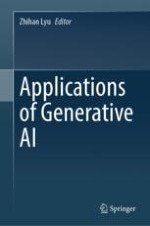2024 | OriginalPaper | Buchkapitel
Generative AI Applications in the Health and Well-Being Domain: Virtual and Robotic Assistance and the Need for Niche Language Models (NLMs)
verfasst von : Graeme Revell
Erschienen in: Applications of Generative AI
Aktivieren Sie unsere intelligente Suche, um passende Fachinhalte oder Patente zu finden.
Wählen Sie Textabschnitte aus um mit Künstlicher Intelligenz passenden Patente zu finden. powered by
Markieren Sie Textabschnitte, um KI-gestützt weitere passende Inhalte zu finden. powered by
